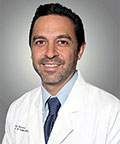- Home
- Foot & Ankle Conditions
- Sports Injuries
- Sever’s Disease (Calcaneal Apophysitis)
Sever’s Disease (Calcaneal Apophysitis)
- Published 10/31/2023
- Last Reviewed 11/1/2023

What is Sever's disease (calcaneal apophysitis)?
Calcaneal apophysitis (more commonly called Sever's disease) is a foot condition that predominantly affects children, especially those who are active in sports. In fact, Sever's disease is the most common cause of heel pain in young athletes.
It commonly presents as unexplained heel pain that isn't the result of trauma. Because many things can cause heel pain, it’s important to consult with a trained pediatric podiatrist to find the root of your child’s heel pain. While it could just be overuse or strain, it could also be Sever’s disease.
- What causes Sever's disease?
- What are the symptoms of calcaneal apophysitis?
- What are some risk factors for Sever’s disease?
- Diagnosing Sever's disease
- What is calcaneal apophysitis treatment?
- Recovering from Sever's disease
- UFAI is here to help with pediatric foot and ankle conditions
- Sever's disease FAQs
- Can you play sports with Sever's disease?
- Can adults get Sever's disease?
- Can Sever's disease cause knee pain?
- Can Sever's disease cause permanent damage?
- Does Sever's disease stunt growth?
- How long does Sever's disease usually last?
- Is plantar fasciitis the same as Sever's disease?
- Is Sever's disease hereditary?
-
ABFAS® Board Certified in Foot Surgery and Reconstructive Rearfoot and Ankle Surgery. and Director of University Foot and Ankle Institute
Dr. Bob Baravarian DPM, FACFAS is a Board-Certified Podiatric Foot and Ankle Specialist. He is an assistant clinical professor at the UCLA School of Medicine and serves as Director of University Foot and Ankle Institute.
Dr. Baravarian has been involved in athletics his entire life and played competitive tennis in high school and college. He has an interest in sports medicine, arthritis therapy, and trauma/reconstructive surgery of the foot and ankle. He is also fluent in five languages (English, French, Spanish, Farsi, and Hebrew),
-
ABFAS® Board Certified in Foot Surgery and Reconstructive Rearfoot and Ankle Surgery. and Director of University Foot and Ankle Institute
Dr. Bob Baravarian DPM, FACFAS is a Board-Certified Podiatric Foot and Ankle Specialist. He is an assistant clinical professor at the UCLA School of Medicine and serves as Director of University Foot and Ankle Institute.
Dr. Baravarian has been involved in athletics his entire life and played competitive tennis in high school and college. He has an interest in sports medicine, arthritis therapy, and trauma/reconstructive surgery of the foot and ankle. He is also fluent in five languages (English, French, Spanish, Farsi, and Hebrew),
 I highly recommend this place. They are full service with multiple doctors, X-ray and MRI, and physical therapy across the hal...Jessica L.
I highly recommend this place. They are full service with multiple doctors, X-ray and MRI, and physical therapy across the hal...Jessica L. Not only are the doctors the best, but all support members are helpful, competent, friendly and and do all possible to make one...Virginia R.
Not only are the doctors the best, but all support members are helpful, competent, friendly and and do all possible to make one...Virginia R. I have lived with extreme pain in my left ankle for 25 years due to a compound fracture of my left ankle which killed the cartl...Pat G.
I have lived with extreme pain in my left ankle for 25 years due to a compound fracture of my left ankle which killed the cartl...Pat G. Really liked the doctor and received great service.Linda L.
Really liked the doctor and received great service.Linda L. I like the early appointments.
I like the early appointments.
Entire staff is the best!Tom D. The treatment I receive from everyone at Dr. Kelmans office is superior to others. I am always treated as a person, not just a ...Paul M.
The treatment I receive from everyone at Dr. Kelmans office is superior to others. I am always treated as a person, not just a ...Paul M. Glad to have another podiatrist in town!Joyce M.
Glad to have another podiatrist in town!Joyce M. Great experience the doctor and staff are so sweet and care for your wellbeing.Nancy C.
Great experience the doctor and staff are so sweet and care for your wellbeing.Nancy C. Right before surgery, everything was going well until the nurse who was taking care of me had a cough and sent another nurse to...Claudine D.
Right before surgery, everything was going well until the nurse who was taking care of me had a cough and sent another nurse to...Claudine D. I did wait for an hour on arrival and was told to be there 30 mins before the appointment. In the future a phone call ahead of...Jeremy I.
I did wait for an hour on arrival and was told to be there 30 mins before the appointment. In the future a phone call ahead of...Jeremy I. Dr. Naei is very professional, thorough and patient, the staff are amazing and the clinic is well organized and clean.Suheil S.
Dr. Naei is very professional, thorough and patient, the staff are amazing and the clinic is well organized and clean.Suheil S. everyone was polite, concerned and professional.Gregory N.
everyone was polite, concerned and professional.Gregory N.
